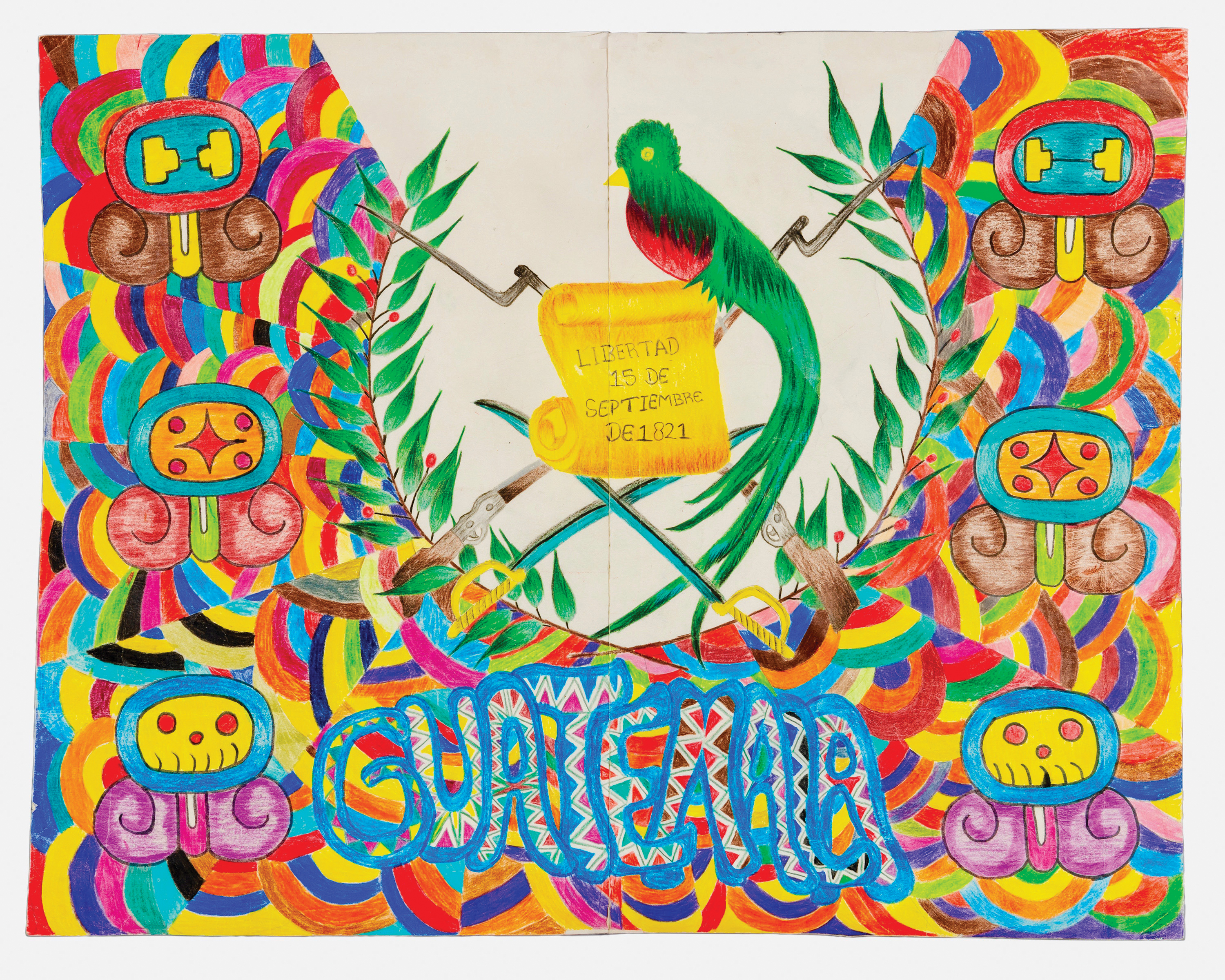
Uncaged Art
Finding life and light in art from detention.
–
by David Dorado Romo
April 22, 2019
When I first saw the art of the children of the Tornillo detention camp, I was struck by the colors. Vibrant, bold, luminous blues, yellows and reds, full of life and optimism. And then there were the birds: tropical birds with brilliant plumage, scarlet macaws (guacamayas), red-beaked parrots and lots of quetzals in dazzling green, blue and gold. In Guatemala the quetzal is a symbol of hope and freedom. “The quetzal,” one of the young artists told his teacher at Tornillo, “cannot be caged or it will die of sadness.”
This isn’t the kind of art you’d expect from children who have traveled 2,000 miles by foot, by bus or atop a train called the Beast. Some came alone or in groups with other kids from Central America. Others made the journey with their parents and were separated upon reaching the border and legally requesting asylum. They were bussed to a camp in the middle of the desert, behind a chain-link, barbed-wire-topped fence covered with black tarp so that the outside world — journalists, politicians and human rights activists keeping 24-hour vigils — couldn’t see them.
At its peak, the Tornillo facility 40 minutes southeast of El Paso housed more than 2,800 Central American boys and girls from 13 to 17 years old. Nationwide, nearly 15,000 migrant kids were detained in December. This was the United States’ largest mass incarceration of children not charged with a crime since the Japanese internment camps during World War II, when more than 25,000 children were confined with their families at remote locations throughout the West. At the Tornillo tent camp, each “unaccompanied alien child,” or UAC, as the government calls them, was under constant watch by staff and couldn’t go anywhere alone, even to the bathroom. Regulations prohibited physical contact between the children and staff. Only fist bumps were allowed. But the worst thing about detention at Tornillo, some of the children told a human rights attorney, was living in a constant state of suspension, not knowing when they would get out. Some of the kids wrote numbers on their forearms to keep track of how many days they had been locked up.
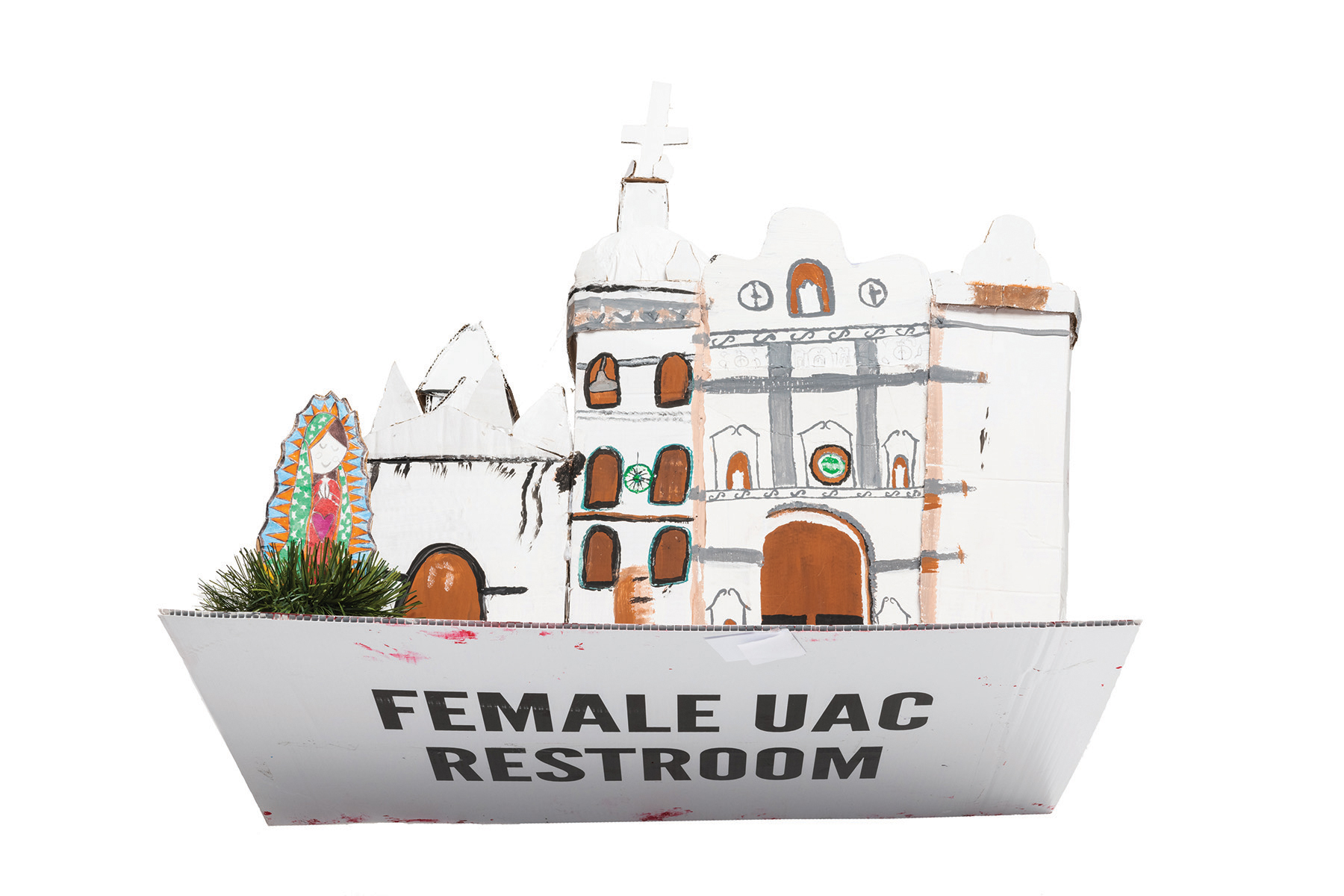
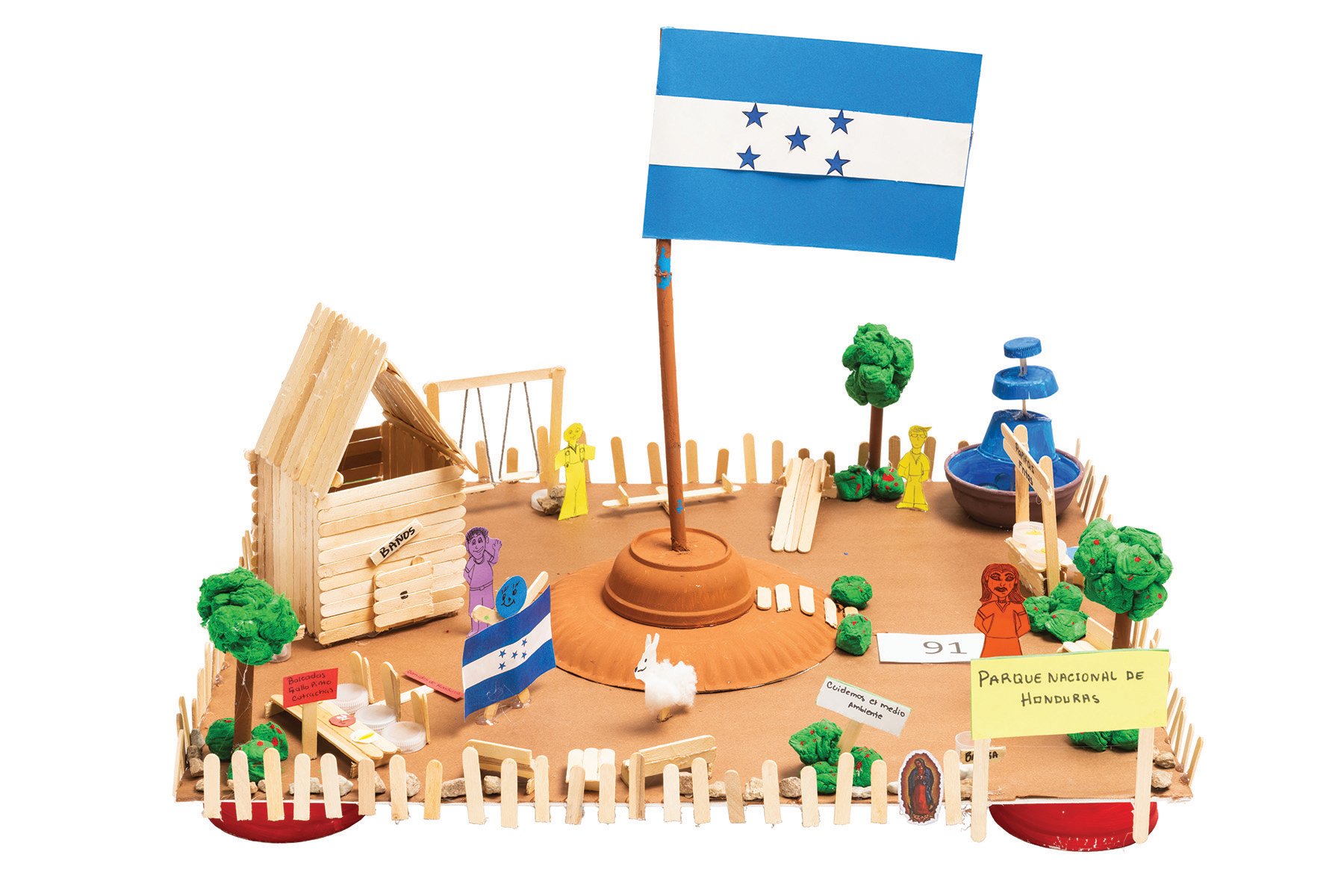
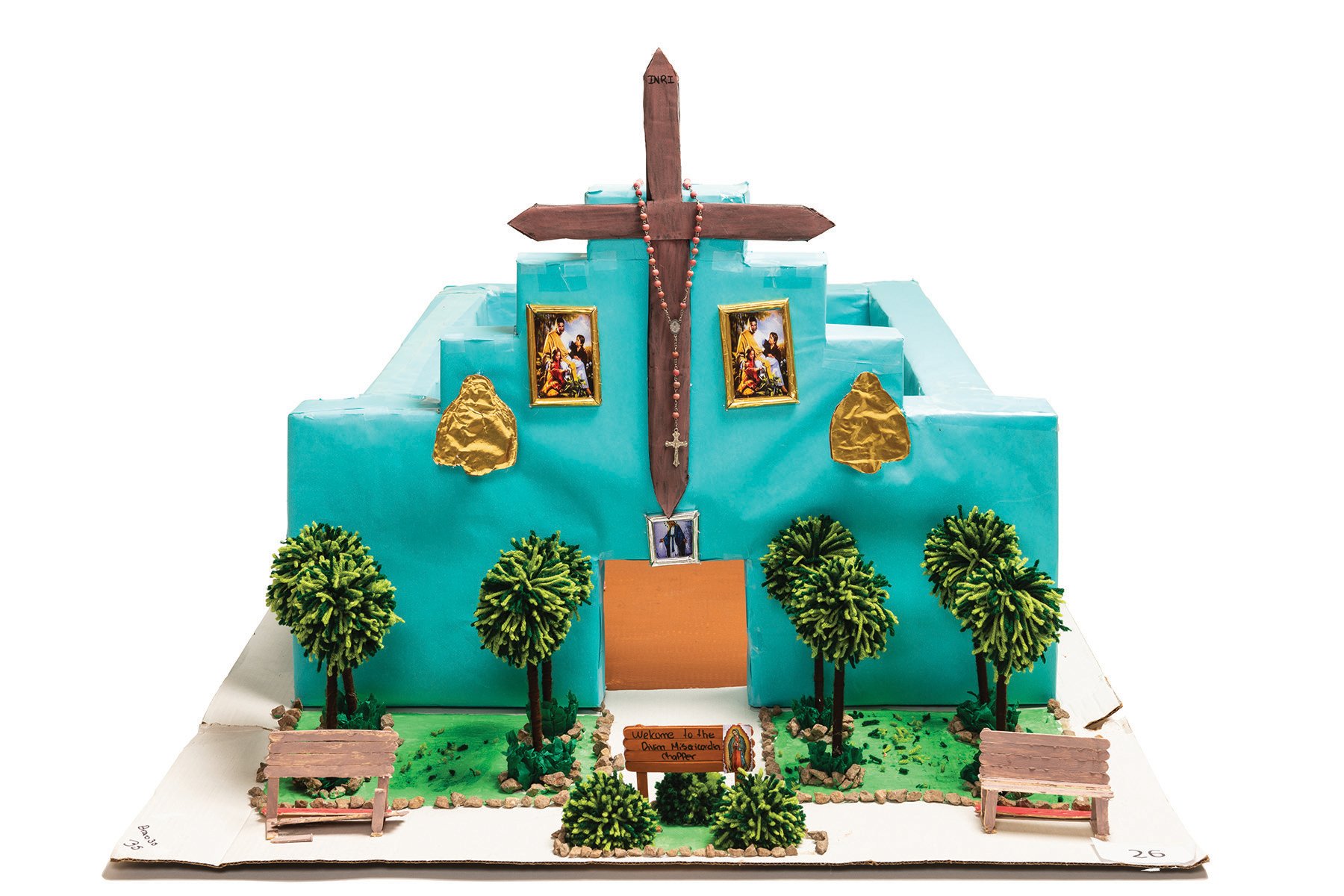
In early January, a van belonging to Baptist Children and Family Services (BCFS), the nonprofit contracted to run the camp, delivered 29 pieces of artwork to the offices of Museo Urbano at the University of Texas at El Paso. Dr. Yolanda Leyva and I founded Museo Urbano more than a decade ago to take public history and art to communities that usually stay away from traditional museums. Father Rafael García, a Jesuit priest from South El Paso’s Sacred Heart Church, asked us to put together an exhibit of children’s art from the Tornillo detention camp. Dr. Leyva and I co-curated one exhibit at the Centennial Museum and another with the art reproduced on large banners in Duranguito, a historic immigrant neighborhood that the city of El Paso wants to raze to build a sports arena. Both will be on display until October 5.
At both Terezin and Tornillo, making art allowed children to transcend — at least in their imagination — the barbed-wire fences that surrounded them.
Had it not been for Father García — one of a handful of priests allowed inside Tornillo to perform mass — all of the children’s artwork would have been thrown away. As the camp prepared to close, staff discarded hundreds of paintings and handicraft objects; those in our show were about to be thrown in large metal trash bins. The artwork had been made as part of a social studies class assignment asking the children to depict their countries of origin: landmarks, parks, sports, food, history and national symbols. Impressed by what the kids created with very limited materials, Father García asked BCFS if he could find a new home for the art.
When the paintings and handicrafts got to us, the names of the young artists had been blacked out with marker. We knew only the numbers of the tents and units where they slept. A team from Bravo-20 made a model of a soccer match using construction paper, paper clips, straws and plastic cups. The pipe-cleaner players and spectators seemed to come alive. Other children, who were asked to cross out their names on the back of their work, were identified as Alpha-9, Charlie-1 and Foxtrot-6. The institutionally imposed anonymity supposedly protected the children, but it also reduced them and their art to letters and numbers expressed in military lingo. The kids’ signatures, however, were still visible on some of the art we received. Did the young artists do this deliberately, as a kind of silent protest against erasure?
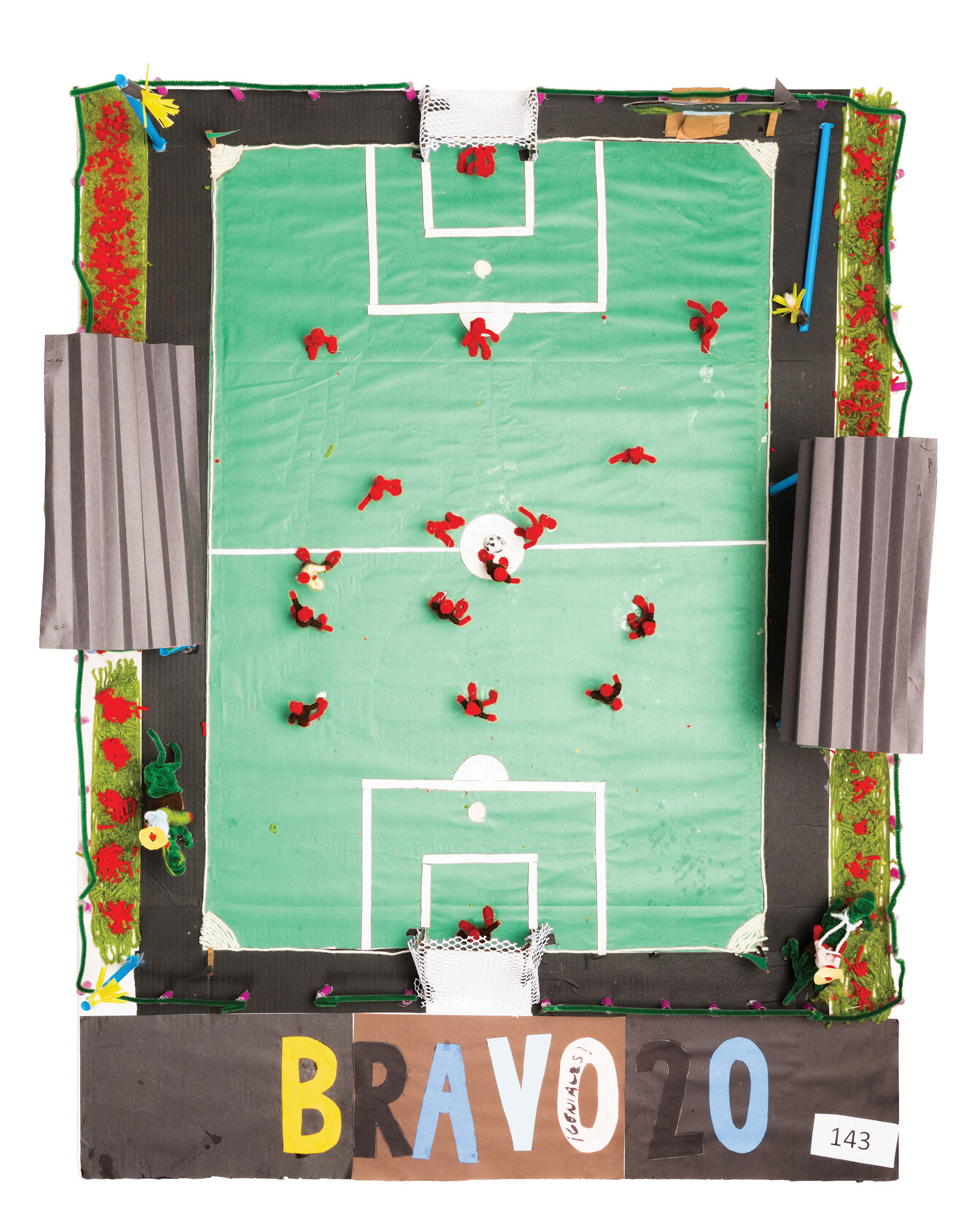
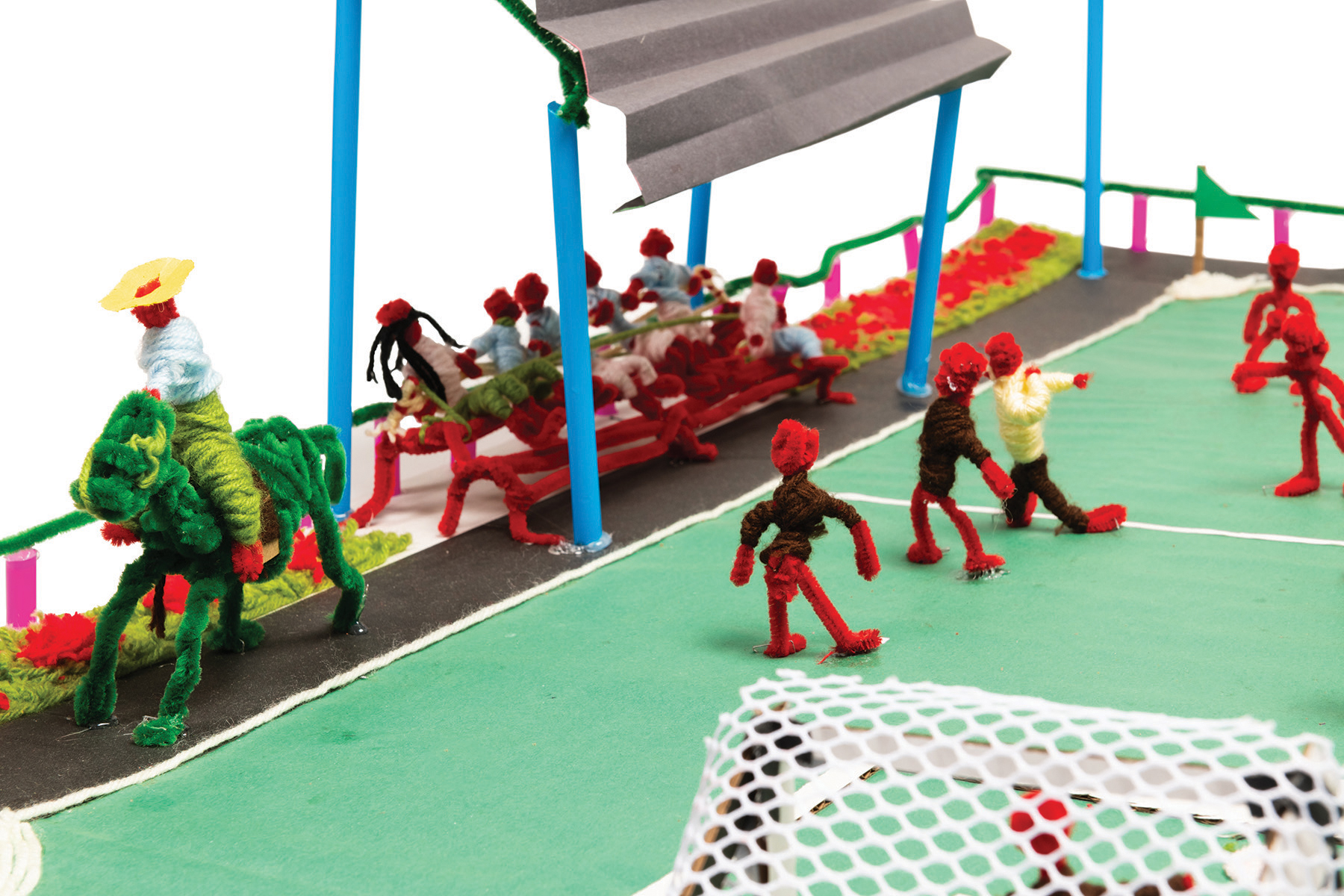
It’s hard to tell which small acts of self-affirmation were intentional and which were not. We have to depend mostly on the objects themselves for clues. One child made a model of a church from a recycled Build-a-Bear box. The young artist appropriated a sign that read “Female UAC Bathroom” and turned it upside down to use as a base for the church. Whether on purpose or not, this was an artful way to transform an ugly, dehumanizing white sign into a beautiful, poignant representation of a meaningful place left behind at home.
Diana Bynum, a former art therapist who has worked in juvenile detention centers, expressed surprise at the brightness and dynamism of the art from Tornillo. Most art by imprisoned kids is bleaker, she says, expressing each inmate’s emotional state. But Bynum considers the artwork created by young people from predominantly Mayan-speaking communities in Central America to be different. “The art I saw from Tornillo seemed more in tune with the ethereal, spiritual rhythms of life,” she said.
One thing the salvaged art from Tornillo doesn’t show is life inside the detention camp. In part, this is because the kids’ assignment didn’t ask them to depict their current environment. But history gives us other examples of children’s art made in confinement that focused on life beyond the walls. Most of the drawings and collages created by the children of Terezin were not about the dreariness of life in the World War II transit camp, which the Germans cynically referred to as a “model spa camp.” Many of the surviving 4,300 watercolor drawings and collages, which were done as school assignments during art class at the camp, depicted memories of home. Like the children of Tornillo, the young Terezin artists signed their works with their name plus the block and house unit where they resided. Things that floated skyward were common: birds, butterflies and rainbows. At both Terezin and Tornillo, making art allowed children to transcend — at least in their imagination — the barbed-wire fences surrounding them.
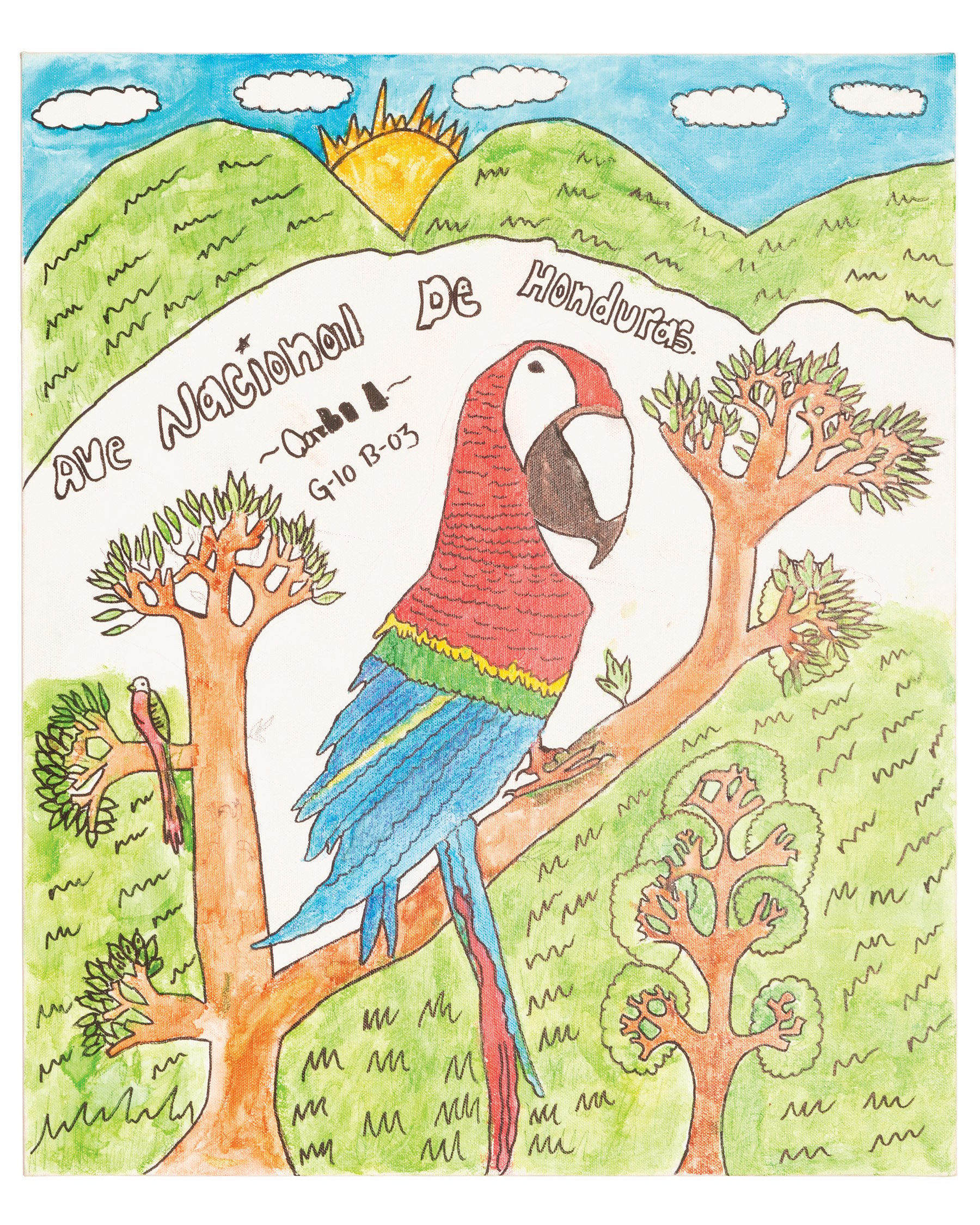
It’s possible that BCFS deliberately excluded or discarded art that showed life at Tornillo in a negative light. Camilo Pérez-Bustillo, a human rights attorney who interviewed about 30 children at Tornillo, isn’t sure if this happened. But he suspects public relations may explain why the agency gave permission for the migrant children’s artwork to be publicly exhibited. “I think they released it to look good,” Pérez-Bustillo said. “They had so much negative publicity at the end from the national media, especially after news reports that their employees did not have to submit to FBI checks, they decided to shut it down and cut their losses.” News reports reminding the public that Central American migrant children made art and played soccer at Tornillo will likely bolster anti-immigrant voices that characterize the remote detention facility as a summer camp.
But these narratives aren’t new. They’ve been repeated along the Texas-Mexico border for more than a century, beginning in 1914, the first time a prison camp for hundreds of Mexican refugee children and their families was set up at El Paso’s Fort Bliss. About 5,000 men, women and children fleeing violence across the border during the Mexican Revolution were kept behind barbed-wire fences under armed guard, though they had committed no crime. The El Paso Herald wrote, “They are a happy lot, those Mexican prisoners. They have plenty to eat, no work to do, and are housed in tents.” A Collier’s magazine cartoon sketch described the Fort Bliss camp as “the greatest picnic of modern times.” It depicted Mexicans swimming across the Rio Grande to break into the Fort Bliss camp, where they supposedly spent their time making blankets and baskets, taking dancing lessons and being fed at the U.S. government’s exorbitant expense. None of this was true. Four inmates were shot to death while trying to escape from their supposedly blissful confinement, and at least 140 prisoners successfully escaped.
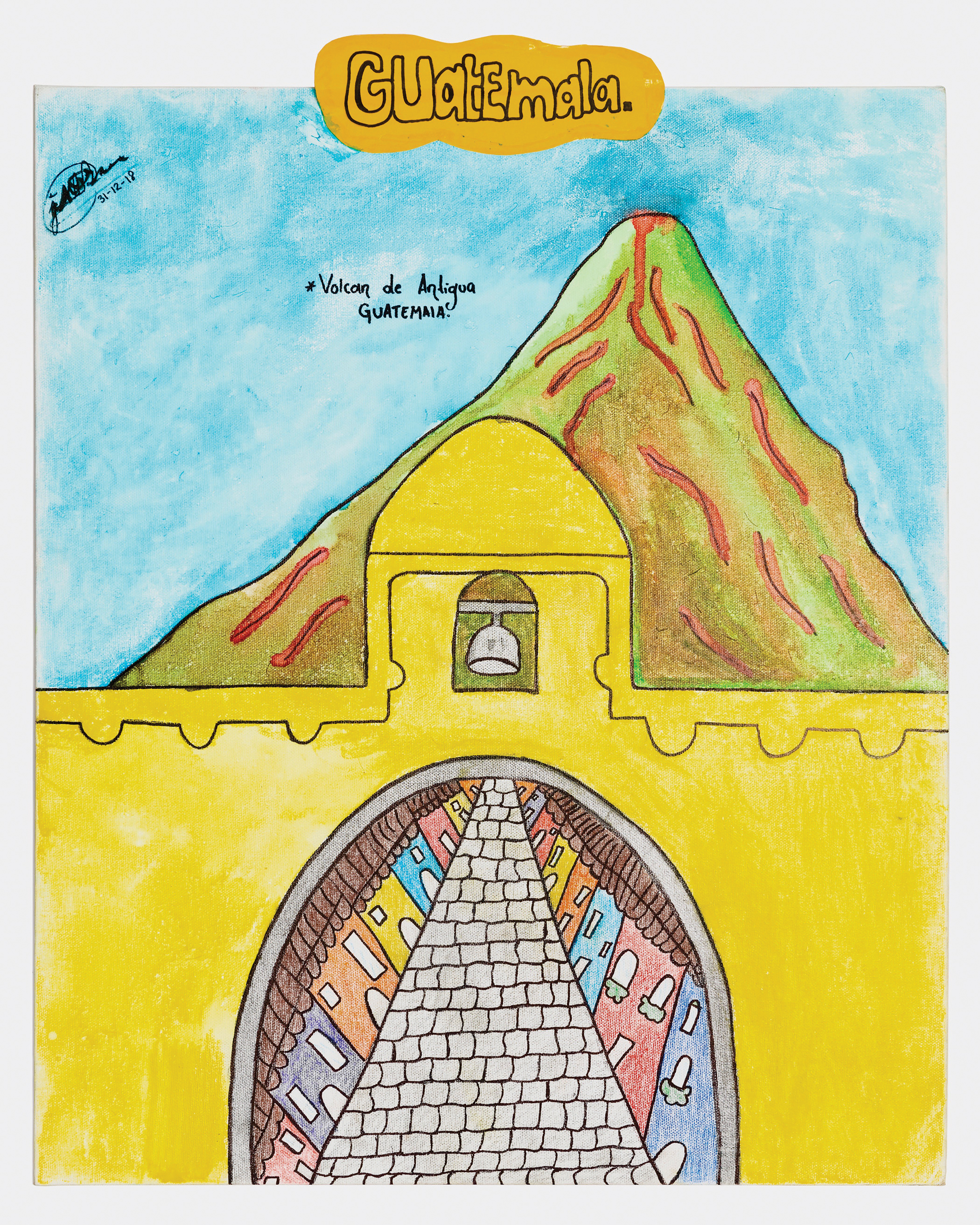
About 6,200 children were confined at Tornillo during the seven-month period it was open. The last child left on January 11. Many were released to sponsors as they wait for their asylum requests to be reviewed by the courts. The Office of Refugee Resettlement relocated others to shelters scattered throughout the United States.
“They are a happy lot, those Mexican prisoners. They have plenty to eat, no work to do, and are housed in tents.”
Father García thinks it makes no sense that the Trump administration has decided to incarcerate young asylum-seekers who have broken no laws. He believes that rather than imprisoning immigrants in remote desert camps, we should instead be looking at them as this country’s hope for renewal. In one of his last masses before the camp shut down, he told the young people: “When you all leave, you can be great agents for change.”
Again and again, he marvels at the humanity and hope that emanates from the Tornillo artworks. “What came through in the art was the talent of the children, who even under those conditions still had the great motivation to make beautiful things,” Father García said. “They could have just gone in a hole of depression. But they didn’t.”
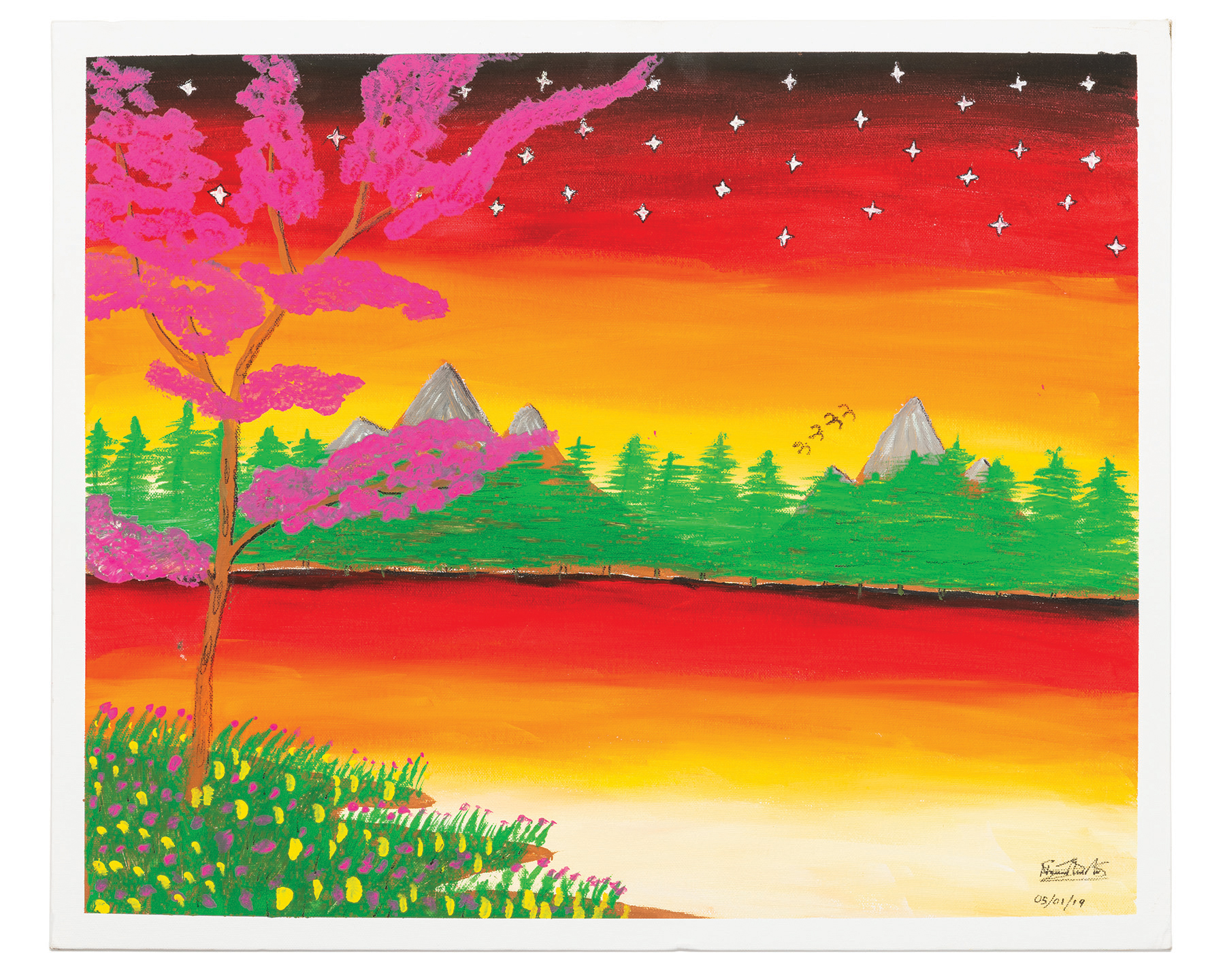
Caption for top painting: Like many paintings from Tornillo, this one features a quetzal. The brightly colored bird is a symbol of hope and freedom in Guatemala.


